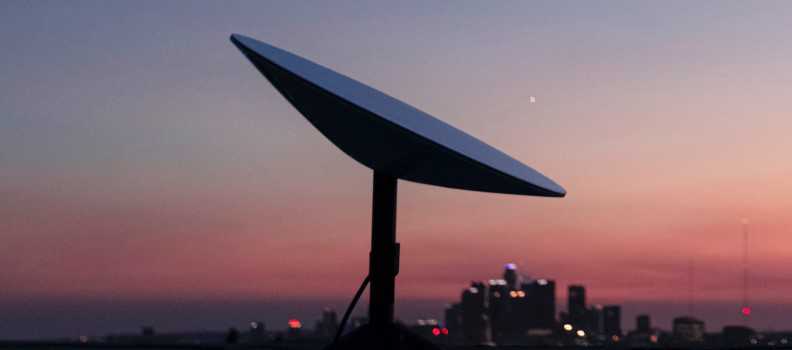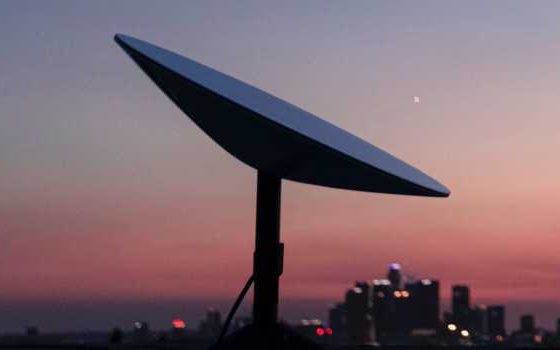

News
Starlink competitor Xfinity launches data caps, which SpaceX says it will not use
SpaceX’s Starlink project has a series of main competitors in the internet market, one of the largest being Comcast’s Xfinity. The Philadelphia-based Comcast recently announced that twelve U.S. states would be subjected to data caps in 2021, or limits on the amount of data one household will have access to before being charged extra fees. Statements from the company have described anything over 1.2 terabytes of data usage accessible with additional fees of $10 per extra 50 GB.
The extra charges for additional data usage are somewhat staggering, considering many households’ current economic situation and the fact that local governments are advising many residents to remain indoors due to the COVID-19 pandemic. This leaves many people at home for work and leisure, with the internet being one of the few constants that remain in everyday life. While cellular devices are usually connected to residential Wi-Fi, other devices, such as smart TVs and streaming devices, are constantly connected to at-home networks, leaving the amount of data being used on a constant rise.
But surprisingly, this fact is not recognized by Comcast, nor is it stopping them from implementing the data caps in the states of Connecticut, Delaware, Massachusetts, Maryland, Maine, New Hampshire, New Jersey, New York, Pennsylvania, Virginia, Vermont, West Virginia, and the District of Columbia, as well as parts of North Carolina and Ohio, The Verge originally reported.
Comcast to impose home internet data cap of 1.2TB in more than a dozen US states next year https://t.co/nsQqyixDH2 pic.twitter.com/rv0XVeqKsb
— The Verge (@verge) November 24, 2020
In fact, it could be a way to combat customers from leaving Comcast’s television subscription services in favor of more affordable and flexible streaming options that are offered by platforms like Hulu and YouTube. The streaming services operate through a streaming device, like an Apple TV or Roku device, and use data to operate. This all contributes to a house’s data usage, and because of its ability to broadcast live television programs, it will use a substantial amount of internet data over the course of the month.
Comcast says that its average customer uses 308GB per month and that 95 percent of its customers do not get close to using the 1.2 TB threshold. But no statistic measures the data used in homes with more than one internet user or outlines the number of devices used in a home. With more people teleworking and having to rely on the home internet for productivity, the data usage is likely higher than normal.
All of these scenarios bode well for Elon Musk’s Starlink internet satellite program, which is currently operating in the Beta stage. Interestingly, Starlink Engineers performed an Ask Me Anything session on the r/Starlink subreddit and revealed that the satellite internet infrastructure would not use data caps when it enters public operation. The company intends to keep the service free of caps and added that it would only be implemented if technically necessary.
The company wrote:
“So we really don’t want to implement restrictive data caps like people have encountered with satellite internet in the past. Right now we’re still trying to figure a lot of stuff out–we might have to do something in the future to prevent abuse and just ensure that everyone else gets quality service.”
SpaceX’s intention with Starlink was to provide internet service to rural and remote areas. But now that the service is being launched and tested in high population areas like Los Angeles, it is obvious that Starlink will aim to serve every human being on Earth. As long as data caps continue to remain out of Starlink’s plans, there is a good chance that many customers of large Internet Service Providers will switch over to the more affordable and more forgiving Starlink service.

News
Tesla Giga Berlin draws “red line” over IG Metall union’s 35-hour week demands
Factory manager André Thierig has drawn a “red line” against reducing Giga Berlin’s workweek to 35 hours, while highlighting that Tesla has actually increased its workers’ salaries more substantially than other carmakers in the country.

Tesla Giga Berlin has found itself in a new labor dispute in Germany, where union IG Metall is pushing for adoption of a collective agreement to boost wages and implement changes, such as a 35-hour workweek.
In a comment, Giga Berlin manager André Thierig drew a “red line” against reducing Giga Berlin’s workweek to 35 hours, while highlighting that Tesla has actually increased its workers’ salaries more substantially than other carmakers in the country.
Tesla factory manager’s “red line”
Tesla Germany is expected to hold a works council election in 2026, which André Thierig considers very important. As per the Giga Berlin plant manager, Giga Berlin’s plant expansion plans might be put on hold if the election favors the union. He also spoke against some of the changes that IG Metall is seeking to implement in the factory, like a 35-hour week, as noted in an rbb24 report.
“The discussion about a 35-hour week is a red line for me. We will not cross it,” Theirig said.
“(The election) will determine whether we can continue our successful path in the future in an independent, flexible, and unbureaucratic manner. Personally, I cannot imagine that the decision-makers in the USA will continue to push ahead with the factory expansion if the election results favor IG Metall.”
Giga Berlin’s wage increase
IG Metall district manager Jan Otto told the German news agency DPA that without a collective agreement, Tesla’s wages remain significantly below levels at other German car factories. He noted the company excuses this by referencing its lowest pay grade, but added: “The two lowest pay grades are not even used in car factories.”
In response, Tesla noted that it has raised the wages of Gigafactory Berlin’s workers more than their German competitors. Thierig noted that with a collective agreement, Giga Berlin’s workers would have seen a 2% wage increase this year. But thanks to Tesla not being unionized, Gigafactory Berlin workers were able to receive a 4% increase, as noted in a CarUp report.
“There was a wage increase of 2% this year in the current collective agreement. Because we are in a different economic situation than the industry as a whole, we were able to double the wages – by 4%. Since production started, this corresponds to a wage increase of more than 25% in less than four years,” Thierig stated.
News
Tesla is seeing a lot of momentum from young Koreans in their 20s-30s: report
From January to November, young buyers purchased over 21,000 Teslas, putting it far ahead of fellow imported rivals like BMW and Mercedes-Benz.

Tesla has captured the hearts of South Korea’s 20s-30s demographic, emerging as the group’s top-selling imported car brand in 2025. From January to November, young buyers purchased over 21,000 Teslas, putting it far ahead of fellow imported rivals like BMW and Mercedes-Benz.
Industry experts cited by The Economist attributed this “Tesla frenzy” to fandom culture, where buyers prioritize the brand over traditional car attributes, similar to snapping up the latest iPhone.
Model Y dominates among young buyers
Data from the Korea Imported Automobile Association showed that Tesla sold 21,757 vehicles to the 20s-30s demographic through November, compared to BMW’s 13,666 and Mercedes-Benz’s 6,983. The Model Y led the list overwhelmingly, with variants like the standard and Long Range models topping purchases for both young men and women.
Young men bought around 16,000 Teslas, mostly Model Y (over 15,000 units), followed by Model 3. Young women followed a similar pattern, favoring Model Y (3,888 units) and Model 3 (1,083 units). The Cybertruck saw minimal sales in this group.
The Model Y’s appeal lies in its family-friendly SUV design, 400-500 km range, quick acceleration, and spacious cargo, which is ideal for commuting and leisure. The Model 3, on the other hand, serves as an accessible entry point with lower pricing, which is valuable considering the country’s EV subsidies.
The Tesla boom
Experts described Tesla’s popularity as “fandom culture,” where young buyers embrace the brand despite criticisms from skeptics. Professor Lee Ho-geun called Tesla a “typical early adopter brand,” comparing purchases to iPhones.
Professor Kim Pil-soo noted that young people view Tesla more as a gadget than a car, and they are likely drawn by marketing, subsidies, and perceived value. They also tend to overlook news of numerous recalls, which are mostly over-the-air software updates, and controversies tied to the company.
Tesla’s position as Korea’s top import for 2025 seems secured. As noted by the publication, Tesla’s December sales figures have not been reported yet, but market analysts have suggested that Tesla has all but secured the top spot among the country’s imported cars this year.
News
Tesla FSD fleet is nearing 7 billion total miles, including 2.5 billion city miles
As can be seen on Tesla’s official FSD webpage, vehicles equipped with the system have now navigated over 6.99 billion miles.

Tesla’s Full Self-Driving (Supervised) fleet is closing in on almost 7 billion total miles driven, as per data posted by the company on its official FSD webpage.
These figures hint at the massive scale of data fueling Tesla’s rapid FSD improvements, which have been quite notable as of late.
FSD mileage milestones
As can be seen on Tesla’s official FSD webpage, vehicles equipped with the system have now navigated over 6.99 billion miles. Tesla owner and avid FSD tester Whole Mars Catalog also shared a screenshot indicating that from the nearly 7 billion miles traveled by the FSD fleet, more than 2.5 billion miles were driven inside cities.
City miles are particularly valuable for complex urban scenarios like unprotected turns, pedestrian interactions, and traffic lights. This is also the difference-maker for FSD, as only complex solutions, such as Waymo’s self-driving taxis, operate similarly on inner-city streets. And even then, incidents such as the San Francisco blackouts have proven challenging for sensor-rich vehicles like Waymos.
Tesla’s data edge
Tesla has a number of advantages in the autonomous vehicle sector, one of which is the size of its fleet and the number of vehicles training FSD on real-world roads. Tesla’s nearly 7 billion FSD miles then allow the company to roll out updates that make its vehicles behave like they are being driven by experienced drivers, even if they are operating on their own.
So notable are Tesla’s improvements to FSD that NVIDIA Director of Robotics Jim Fan, after experiencing FSD v14, noted that the system is the first AI that passes what he described as a “Physical Turing Test.”
“Despite knowing exactly how robot learning works, I still find it magical watching the steering wheel turn by itself. First it feels surreal, next it becomes routine. Then, like the smartphone, taking it away actively hurts. This is how humanity gets rewired and glued to god-like technologies,” Fan wrote in a post on X.








